Honor Award
Productive End Walls
Cai Hanwei Leonard, Student Affiliate ASLA, National University of Singapore
Faculty Advisors: Jörg Rekittke and Hwang Yun Hye
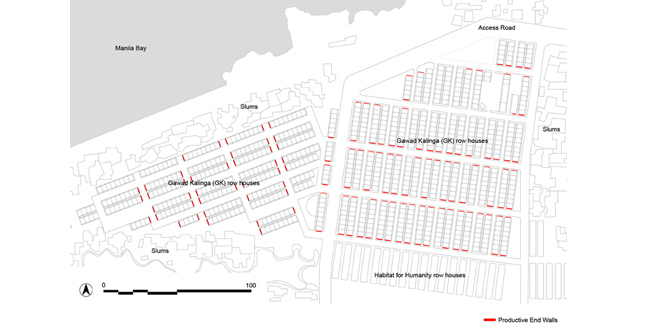 Close Me!
Close Me!Site Plan of GK Baseco showing the location of 139 productive end walls.
Download Hi-Res ImagePhoto: Cai Hanwei Leonard
Photo 1 of 16
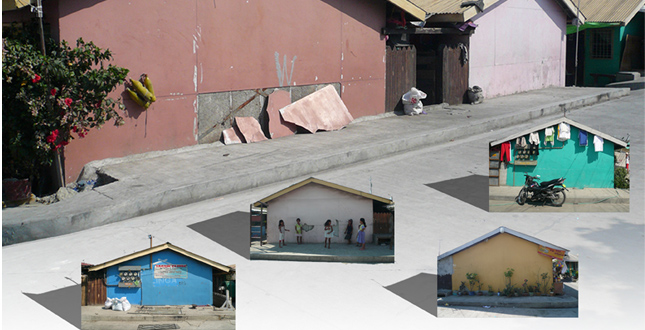 Close Me!
Close Me!Under-utilized end walls in Baseco, Manila
Download Hi-Res ImagePhoto: Cai Hanwei Leonard
Photo 2 of 16
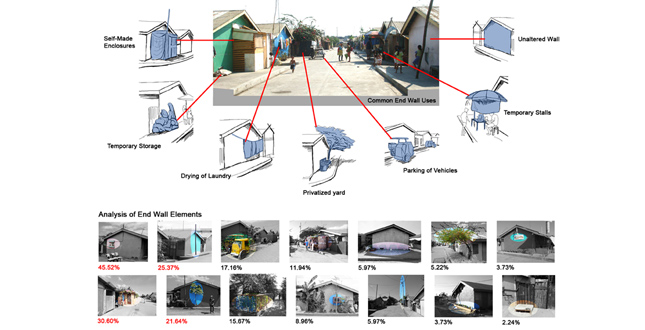 Close Me!
Close Me!End wall elements and their occurrences in a sample of 134 end walls, elements with numbers in red have an occurrence exceeding 20%
Download Hi-Res ImagePhoto: Cai Hanwei Leonard
Photo 3 of 16
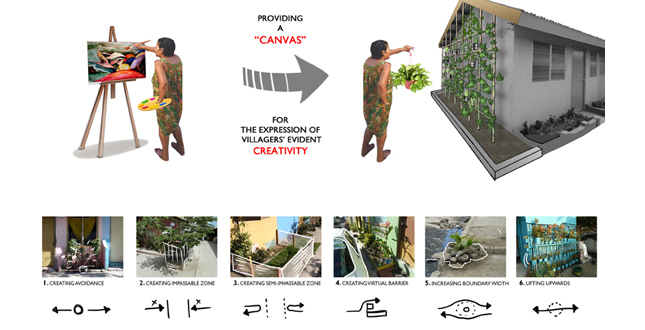 Close Me!
Close Me!Creativity demonstrated by the principles used by the locals in protecting their plants.
Download Hi-Res ImagePhoto: Cai Hanwei Leonard
Photo 4 of 16
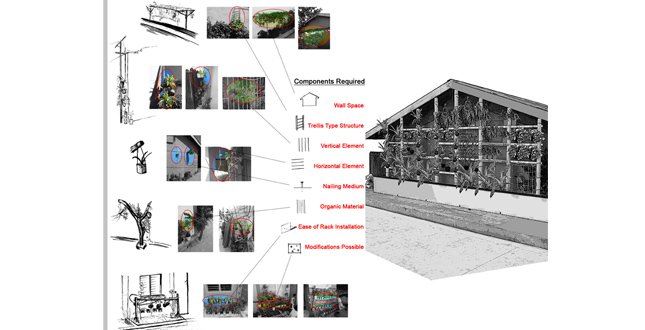
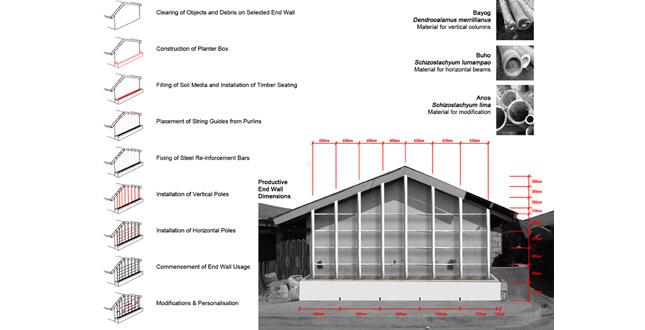 Close Me!
Close Me!Construction Procedure and the Use of Locally Available Materials
Download Hi-Res ImagePhoto: Cai Hanwei Leonard
Photo 6 of 16
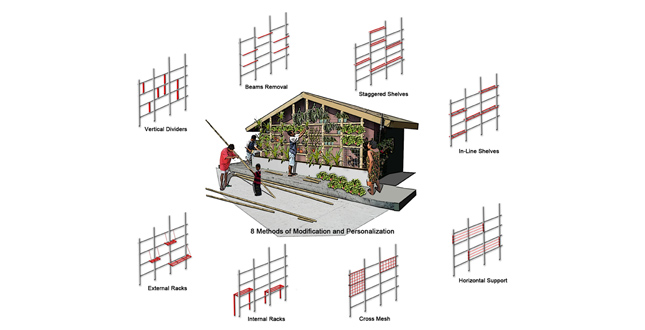 Close Me!
Close Me!8 Methods of Modification and Personalization
Download Hi-Res ImagePhoto: Cai Hanwei Leonard
Photo 7 of 16
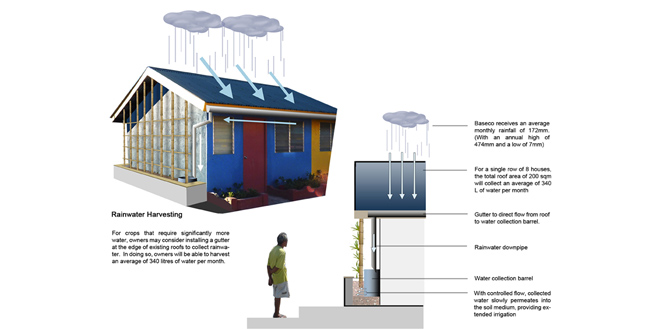 Close Me!
Close Me!Rainwater Harvesting. For crops that require significantly more water, owners may consider installing a gutter at the edge of existing roofs to collect rainwater. In doing so, owners will be able to harvest an average of 340 liters of water per month.
Download Hi-Res ImagePhoto: Cai Hanwei Leonard
Photo 8 of 16
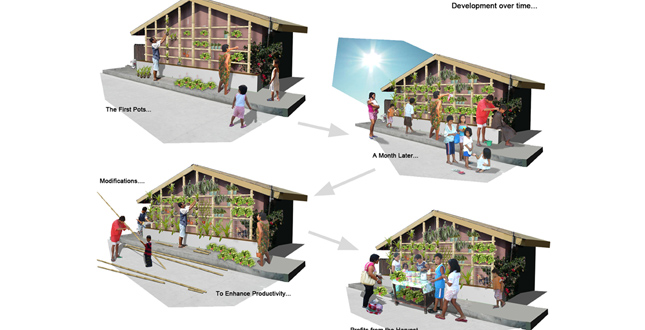
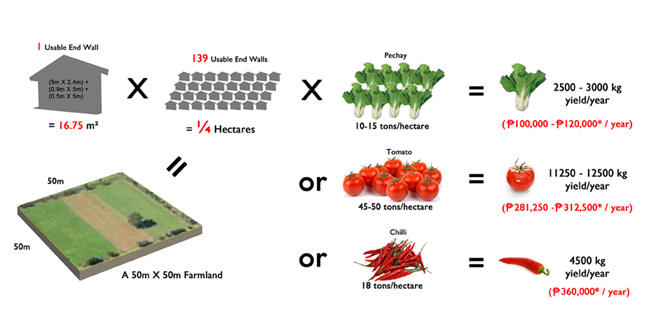 Close Me!
Close Me!139 productive end walls equates to having a 50m by 50m farmland, capable of generating vast quantities of food and medicinal crops, providing economic returns for the community.
Download Hi-Res ImagePhoto: Cai Hanwei Leonard
Photo 10 of 16
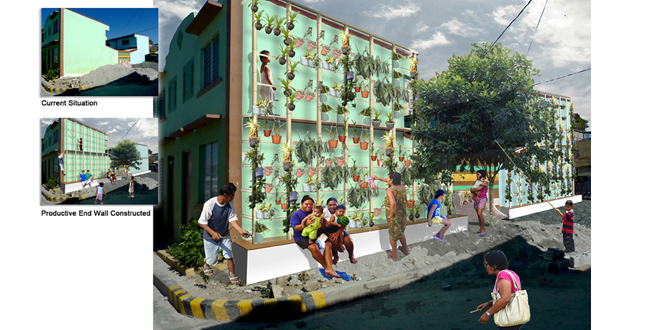 Close Me!
Close Me!Application of Productive End Wall in GK Sitio Pajo.
Download Hi-Res ImagePhoto: Cai Hanwei Leonard
Photo 11 of 16
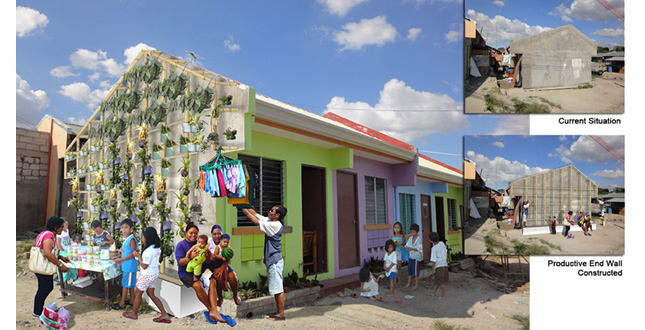 Close Me!
Close Me!Application of Productive End Wall in GK Bagong Silang.
Download Hi-Res ImagePhoto: Cai Hanwei Leonard
Photo 12 of 16
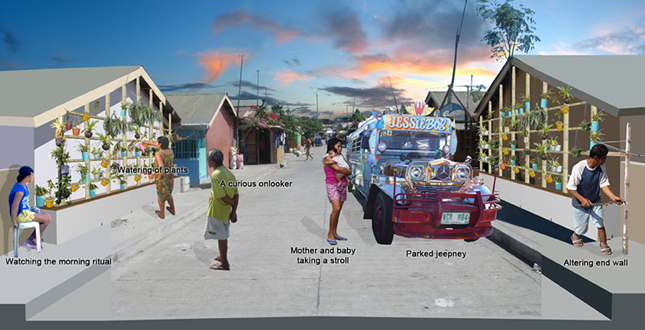 Close Me!
Close Me!Round the Clock Activities in GK Baseco 5:00am – 9:00am
Download Hi-Res ImagePhoto: Cai Hanwei Leonard
Photo 13 of 16
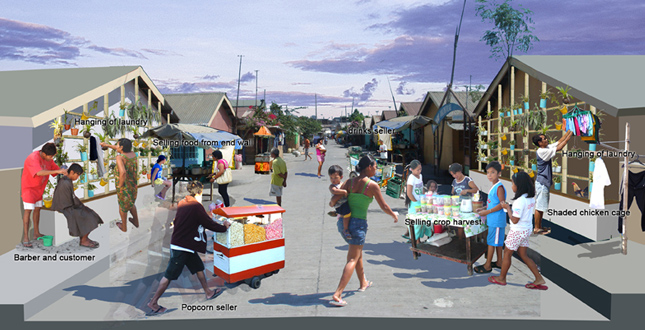 Close Me!
Close Me!Round the Clock Activities in GK Baseco 9:00am – 12:00pm
Download Hi-Res ImagePhoto: Cai Hanwei Leonard
Photo 14 of 16
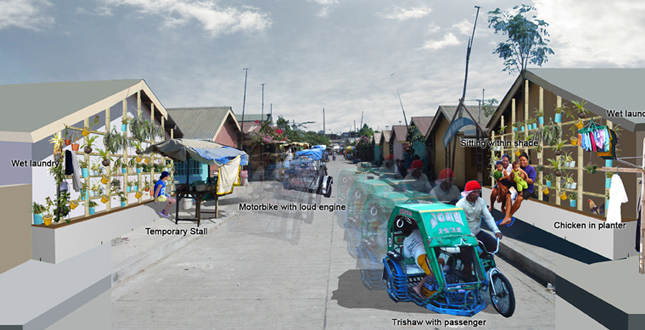 Close Me!
Close Me!Round the Clock Activities in GK Baseco 12:00pm – 5:00pm
Download Hi-Res ImagePhoto: Cai Hanwei Leonard
Photo 15 of 16
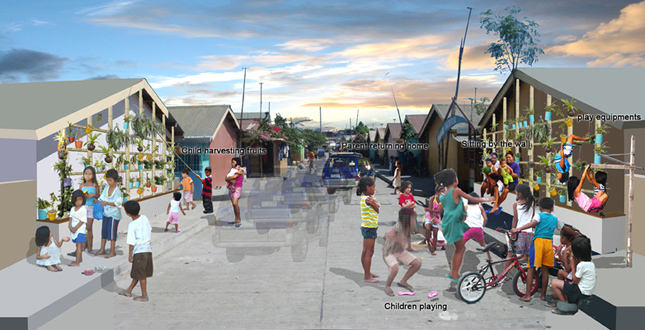 Close Me!
Close Me!Round the Clock Activities in GK Baseco 5:00pm to the end of the day
Download Hi-Res ImagePhoto: Cai Hanwei Leonard
Photo 16 of 16
Project Statement
This project tackles economic and spatial constraints in low-cost housing sites by generating “arable land” from under-utilized end walls. Through analyzing how villagers cultivate plants in unimaginable spots, this wall farming system integrates the villagers’ creativity as an essential component in unlocking the full potential of end-walls. In addition to aesthetical improvement, the productive end walls will serve to provide food for the table, generate economic returns, and ultimately enhancing the people’s quality of life.
Project Narrative
Background
In the vicinity of Manila, Philippines, several slum upgrading projects are being carried out by a non-profit organization, Gawad Kalinga (GK). These projects involve the eradication of slums and the construction of low-cost row houses. Working within the economic and spatial constraints of such communities, this project aims to introduce a robust and low cost intervention, capable of generating food for the table and improving the communities’ standards of living.
Project Location
While the research for this project spans several GK sites, GK Baseco is the main project site, where the basis of the project is founded. GK Baseco comprises 7 hectares of flat reclaimed land, with a total of 910 completed housing units. As part of the GK’s vision to promote equality, every house is constructed in the exact same way. This replication results in the common feature of blank walls found on either ends of each row of houses. Based on the houses in GK Baseco, each end wall has a total area of 16.75 square meters. This area, when multiplied by the 238 end walls found within the site, gives an astounding 4,000 square meters.
Site Limitations
Notwithstanding, not all the walls can be converted into productive end walls due to a number of obstructions on site. The occurrence of self-made structures, temporary stalls, trees, and similar objects hindered possible alterations to the end walls. In consideration that alteration of such end walls may result in discontentment amongst the inhabitants, implementations on such walls are avoided. Concluding from this study, it was found that out of the 238 end walls, 139 of them are available for conversion. The successful conversion of these end walls will equate to having an additional farmland measuring 50m by 50m, a full quarter hectare.
Design Program & Intent
Having established which walls can be used, the next step was to address how each of these walls could be designed to realize their full potential. During the fieldwork, it was noticed that the locals were highly creative in their ability to grow plants in the most unexpected places. They have developed numerous ways to protect plants from the harsh environment, preventing damage by children and animals. Noting their creativity, the participation of the villagers became a priority in the design of the productive end wall. By the conceptualizing the end walls as art canvasses for the villagers, the creativity of the villagers formed an essential ingredient in the design of each end wall. Correspondingly, the owner of each productive end wall will be given the responsibility for its aesthetics and workings. Existing methods used by the villagers were closely studied to find out what are the components required to create a wall that is considered easy to use by the locals, for the purpose of cultivating plants. The main components derived from this study are namely, sufficient wall space, trellis type structure, vertical elements, horizontal elements, nailing medium and organic material. In addition to these prerequisites, there should also be ease of rack installation and the feasibility of modification.
Materials and Installation Methods
To meet the array of requirements, bamboo is proposed as the primary building material. The construction of the productive end walls uses simple technology that is easy to execute without professional builders. Using locally available material of three species of bamboo, Dendrocalamus merrillianus, Schizostachyum lumampao, and Schizostachyum lima, users have the flexibility of modifying the structure at any time to suit their needs and the growth habit of any particular crop that they are growing. For a start, each productive end wall owner will be given a manual containing eight possible methods of modifying the structure to suit different purposes. Such modifications with simple bamboo construction techniques will present a scene of dynamic and ever-changing walls that each of the wall owners is proud to call their own.
Plant Selection
Sun study was done to ascertain the amount of sunlight received by various end walls over the course of the year. From this study, it was found that over most times of the year, the north-facing walls remains partially shaded, while the south-facing walls receive direct sunlight. Correspondingly, plants to be grown on the north-facing wall will generally comprise of medicinal crops while those on the south-facing walls will largely comprise of food crops.
Rainwater Harvesting
For crops that require significantly more water, end wall owners may consider a sustainable means of obtaining the required water supply. By installing a gutter at the edge of existing roofs and directing the water into the collection zone within the planter, owners will be able to generate an average of 340 litres of water per month. With the end walls doubling up as a miniature “rain garden”, the amount of rainfall that flows into the primary drain is significantly reduced, and drainage capacity of the present drainage system will be improved.
Crop Produce
With successful establishment of plants on these end walls, it can generate significant amounts of harvest for the community. The total of 139 end walls will be capable of producing up to 3,000kg of Pechay, or 12,500kg of Tomatoes, or 4,500kg of Chilli per year. This relates to an economic return of up to 360,000 Pesos or USD$7,732 per year. With each of these low-cost productive end wall requiring less than 4,600 Pesos or USD$100 to construct, the investment will breakeven in less than two years, and this is not considering the aesthetical and social benefits the productive end walls can bring to the community along the way.
Application in Other Sites
While the analysis and research for this project was largely based on the site of GK Baseco, many references were made from sites such as GK Sitio Pajo and GK Bagong Silang. The intention in doing so was to develop a system that not only performs well within a single site, but is applicable to every other slum upgrading site that possesses the common feature of blank end walls. Endless possibilities can be derived given the transferability of this single idea.
Vision and Objectives
In a nutshell, productive end walls serve to provide economic return from an otherwise idle resource. With the construction of the first two productive end walls now underway, it is believed that the widespread implementation of the productive end walls will not only benefit the GK communities in terms of improved aesthetics, it will enable the people to generate food for the table and achieve economic returns, ultimately enhancing their standards of living.
Additional Project Credits
National University of Singapore, Masters of Landscape Architecture faculty – for facilitating this project.
Gawad Kalinga (NGO) – for hosting numerous site visits to various Gawad Kalinga (GK) villages and making on-site studies of slum areas possible.





